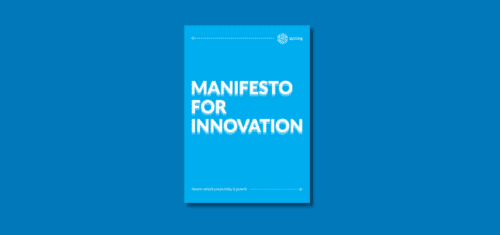The Patent Box regime is a valuable tool that can help innovative businesses in the UK reduce their corporation tax on profits earned from patented inventions.
In this article, find answers to the most common questions about the Patent Box and gain a straightforward understanding of how it works, who can benefit, and how it connects with R&D tax relief.
What is it and how does it work?
The Patent Box is a UK tax relief scheme that allows companies to pay a lower rate of corporation tax on profits from patented products or processes. By “electing into the Patent Box”, businesses can reduce the tax they pay on profits earned from certain intellectual property, potentially cutting the rate to 10% instead of the current main rate of corporation tax of 25%. This incentive is designed to reward companies for undertaking R&D and holding intellectual property in the UK.
How do R&D tax relief and the Patent Box work together?
R&D tax relief and the Patent Box are two separate schemes, but they can be used together to maximise tax benefits for innovative companies.
R&D tax relief helps reduce costs by offering tax relief on qualifying R&D expenditure, covering a portion of the money spent on research and development. Once a company develops a patented product or process through these R&D activities, they can then use the Patent Box to pay a lower tax rate on profits derived from that intellectual property.
Who is eligible to benefit from the UK Patent Box Regime?
The Patent Box is open to companies in any industry, as long as that company is subject to UK corporation tax, owns or exclusively licenses qualifying patents and earns profits from them. Here are some industries that frequently use the Patent Box to reduce their tax on profits from patented products and innovations.
- Pharmaceuticals and life sciences companies often use the Patent Box to reduce tax on profits from drugs, medical devices, and biotech innovations covered by patents or marketing authorisations.
- Manufacturers and engineering firms can apply the Patent Box to profits from patented machinery, production methods, and specialised equipment.
- Technology and software companies (including within Financial Services) may benefit from the Patent Box for patented software, algorithms, and hardware solutions.
- The automotive and aerospace sectors often leverage the Patent Box for patented parts, safety features, and advanced materials.
- Companies in renewable energy and environmental tech use the Patent Box to reduce tax on profits from patented clean energy solutions, sustainable products, and environmental innovations.
- Food & beverage manufacturers can apply the Patent Box to profits from patented production processes, formulations, and packaging innovations, particularly where improvements offer sustainability, efficiency, or shelf-life gains. Moreover businesses often qualify for the Patent Box by holding plant variety rights, recognised as qualifying IP under the scheme.
How to calculate Patent Box tax relief?
Calculating Patent Box tax relief involves several key steps to make sure that only the profits directly tied to qualifying IP (intellectual property) are taxed at the reduced rate:
- Identifying relevant IP income: Determine income specifically from patented products or processes. This includes sales of patented products and any royalties or licensing fees.
- Deducting relevant IP costs: Identify the costs that relate to the generation of the relevant IP income and deduct these from the income to identify the profit relating to the patented products or processes.
- Deducting routine profits: Subtract a routine return – profits the business would likely earn even without the patented IP. This ensures only profits that result from the patent qualify.
- Removing marketing-related profits: Exclude any profits from marketing or branding activities, as these do not stem directly from the patent. Items to be considered here include brand names and logos.
- Applying the R&D fraction: This step adjusts for the amount of R&D expenditure the company directly funded when developing the patented invention or process. Companies that outsourced the majority of their R&D to other group companies or acquired their IP may see a smaller relief, while those doing R&D in-house receive the full benefit.
The result is the “relevant IP profits,” which can then be taxed at the lower Patent Box rate, potentially reducing corporation tax on these profits to 10%.
In order to obtain the Patent Box benefit, the patent must be granted however there is the option to bring in profits arising prior to the grant of the patent as long as the company was elected into the regime.
For more detailed guidance on calculating Patent Box tax relief, see the official gov.uk page.
Common mistakes to avoid when applying for the Patent Box
- Not confirming patent eligibility: Ensure that only profits from qualified IP (like UK or European patents, marketing authorisation and plant rights) are included. Non-qualifying IP (such as US patents or copyrighted software) won’t be eligible for relief.
- Incorrectly calculating relevant profits: Be precise in excluding routine and marketing-related profits to avoid overestimating the amount eligible for the reduced tax rate.
- Overlooking the R&D fraction: If R&D work was outsourced to other group companies or IP has been acquired, be sure to apply the correct R&D fraction to adjust the claim. This step often gets missed but can impact the relief amount.
- Failing to elect into the scheme: Businesses must formally “elect into” the Patent Box with HMRC, it isn’t automatic. You have 2 years from the end of the relevant accounting period to elect in and can elect in whilst the patent is pending.
- Neglecting documentation: Be sure to maintain clear records of R&D activities and patent applications to support your claim in case of an audit.
We’re here to help
At Ayming, we help businesses like yours maximise the value of the Patent Box and R&D tax relief schemes. Our experts analyse your patented income and expenditure and R&D expenditure, using a customised approach to help you achieve the best possible tax outcome.
Get in touch to see how we can help you unlock valuable tax savings for your innovations.




